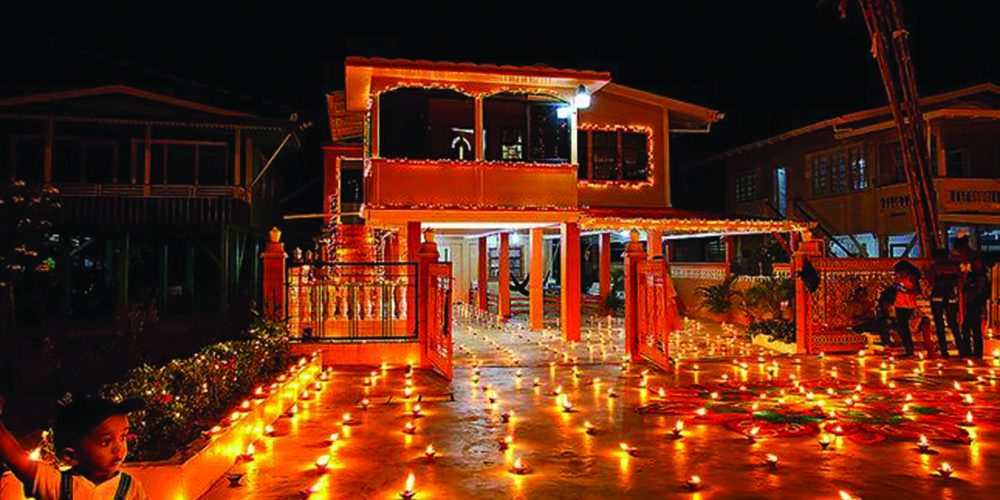Diwali The Festival of Lights
Story by Dr Vindhya V Persaud
Festivals contribute to the cultural tapestry of all countries. Each festival brings with it a unique blend of customs and traditions and acts as a harbinger of good-will, peace and fraternity.
Centuries ago, Diwali was celebrated in the confines of the logies (primitive homes) in villages. Our forebears, the indentured immigrants strove to maintain their culture and religion with whatever limited facilities were available in those times. Diyas were lovingly crafted out of mud and the radiance given off from these little lights served as a beacon of hope to them as they toiled under the most horrendous conditions.
Diwali, which literally means a row of lights, is celebrated on the 15th day of the Hindu month of Kartik. It is the darkest night of that month and is conducive to the twinkling lights that illuminate every nook and cranny. Worship of the goddess Maha Lakshmi is the main focus of Diwali. The aspirant performs Lakshmi puja and seeks her blessing for material and spiritual fulfillment. The festival encourages the participation of the entire family and it has long been the custom in Guyana for everyone in the home to gather in front of their Lakshmi murti at dusk chanting prayers and mantras before emerging to light their first diya. Prior to the day itself the home and mandirs would be thoroughly cleaned and decorated in preparation for the Goddess of light, Maha Lakshmi. The ladies of the home would in recent times design elaborate rangolis ( coloured tracings on the floor) and be absorbed in making sweet delicacies for family and friends. At this time, the household would be sanctified as vegetarian fasts are the norm. Hindus would also abstain from alcohol. Over the last 3 decades the festival has gained prominence, and features on Guyana’s list of national holidays.
Diwali has emerged from homes and mandirs and presently many commercial entities and public building are decorated with lights to welcome the goddess Maha Lakshmi. The trend of using electric lights has increased and more persons are supplementing their diyas with these creating an aesthetically appealing look that has passers by gasping in awe. Diyas are hardly made by individual householders, but those professionally made from clay can be purchased from stores and vendors. Novel innovations to the once simple mud diya filled with ghee and lit with a cotton wick include wax filled diyas and electrical diyas. The humble diya has certainly withstood generations and in spite of all the new- fangled techniques it still reminds the Hindu to rekindle that inner light within and to extend to all those he or she comes in contact with.
The Guyana Hindu Dharmic SabhaÕs Countrywide Motorcades have become synonymous with the celebration of Diwali in Guyana. Thousands of Guyanese of every stratum of society and cultural belief throng the roads to witness the processions of beautifully decorated and illuminated vehicles depicting the theme of Diwali. In the olden days it wasn’t unusual to see horse-drawn carts gaily bedecked for the motorcade. With the advent of advanced technology, vehicles ranging from low-bed trucks to sleek cars are carefully designed with sophisticated lights and mobile parts. The Dharmic Sabha’s motorcades are major tourist attractions.
Diwali in its many dimensions addresses questions which are not only philosophical, but also economical and social in orientation. Diwali threatens darkness in all its dimensions and influences the emergence of an illuminated society in which there exists understanding, tolerance, love and cordiality.
Societies are built and sustained on foundations such as these. Festivals like Deepavali serve to rekindle hopes and expectation, and influence society in a positive direction. Diwali renews the spirit of optimism from which a new beginning can be constructed, based on equity and noble intentions.

